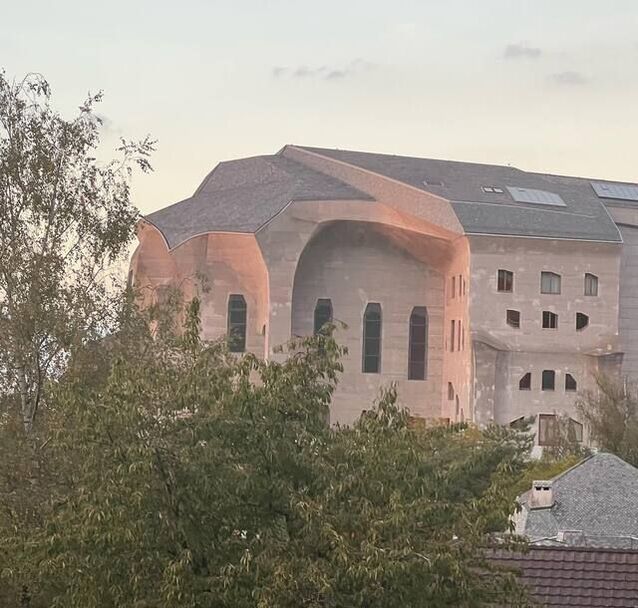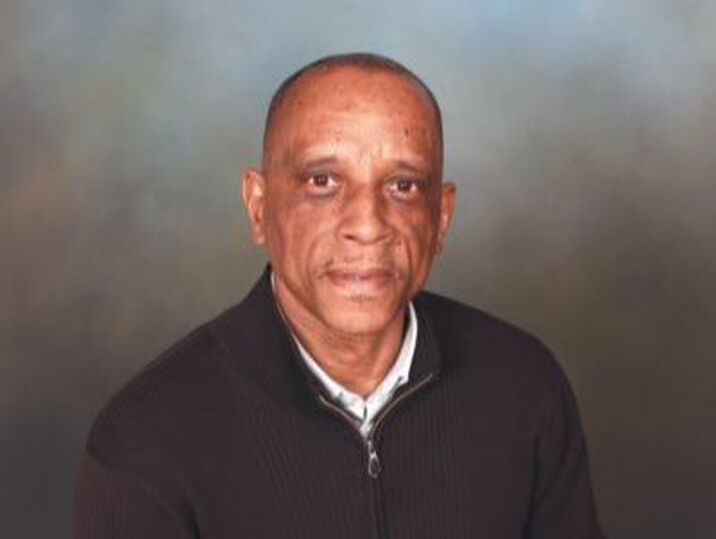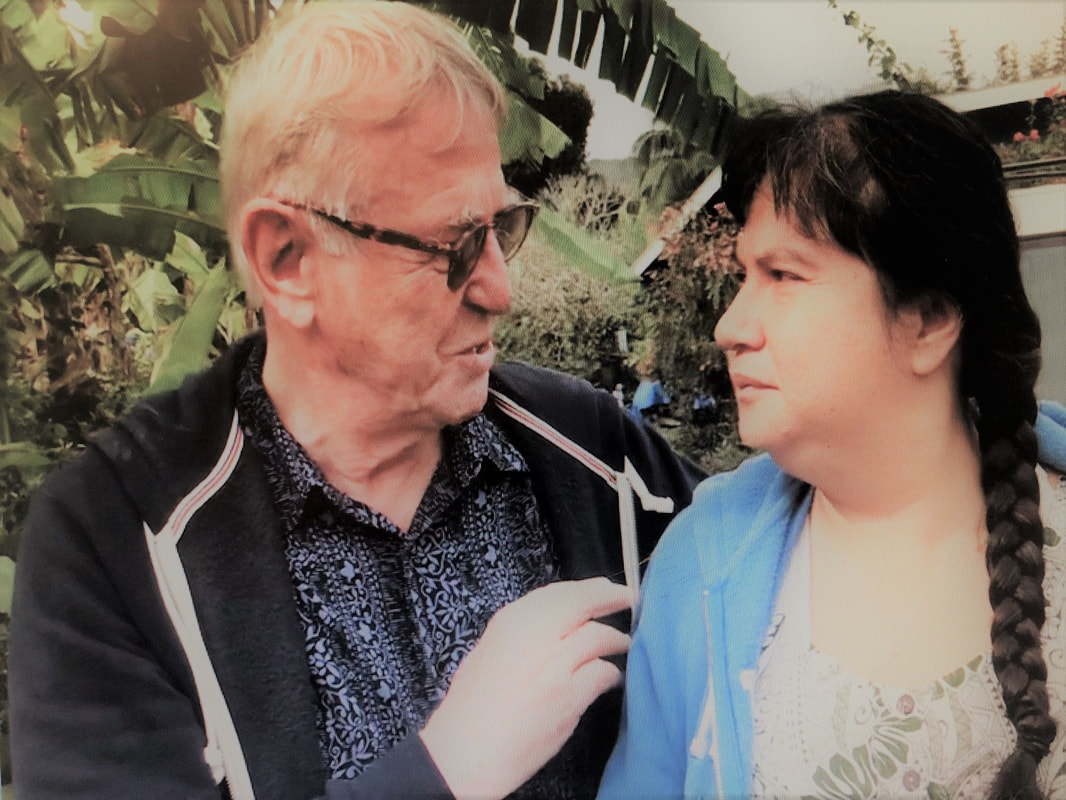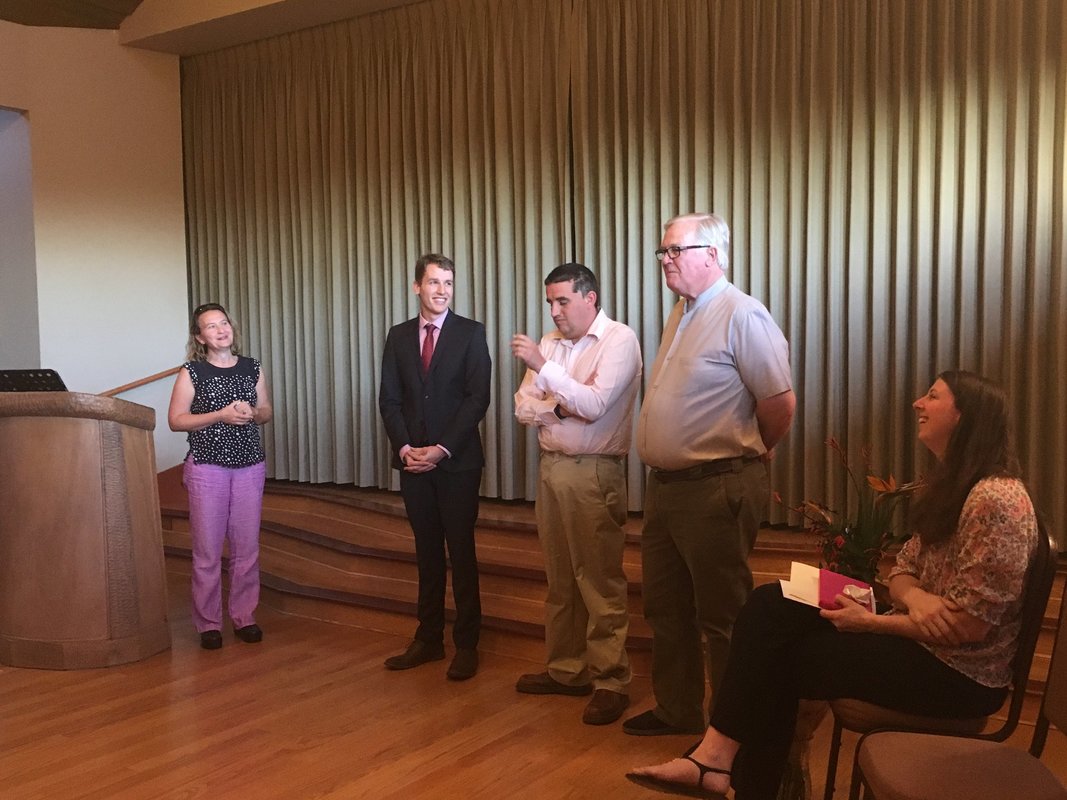|
Author Anya Hobley International Delegate for the North American Council Executive Co-Director, Camphill Communities California In October 2024, the new Section will be inaugurated and welcomed at the large international conference, and will be welcomed by the eleven other Sections. This will also mark the 100 Years of the Curative Course, and inclusive social development in the world. The new section will be called: Section for Inclusive Social Development. Structurally this won’t change in a big way; we will still receive financial support. This new section will be supported by the General Anthroposophical Section- the School of Spiritual Science, no longer the Medical Section. Who will take care of this in collaboration with the leadership you may ask? Bart, Sonja & Jan will continue leading this section as a collaborative leadership team, and Jan Goeschel will sit on the Goetheanum Council in an Anthroposophical leadership role. Rudolf Steiner gave specific meditations to help us to develop one’s inner morality for taking care of those in need of soul care. The pedagogical exercises are the basis of our work (high pedagogy). These “inner aspects of our profession” are what we can develop in this new Section. Certain forms and agreements are there to support our inner work and a space of respect and support of one another to do this work. Everyone who wants to be engaged in this work is encouraged to join in the work of this new section. There will be full transparency of financial support and assets, also maybe new forms of organization and how we are connected to different groups within the Anthroposophical movement. When one becomes a member of the Anthroposophical Branch in one’s own country, then you automatically become a member of the Anthroposophical Society worldwide- connected to the whole world! We need to raise awareness of this in our own countries and communities, also for the youth and emerging leaders in our organizations. Many people work out of Anthroposophy or are inspired by it, but have not made a formal relationship or commitment to supporting it in the wider world. As international delegates, we were asked to meet in small groups, and asked to discuss the following questions: How do we understand the role of the delegates circle in the context of/ in relation to the new Section? What is the role of the delegates? What will change? Is there anything new that arises as a task for us as delegates? Where is the “spiritual” in the research tasks of this new section? Indeed there are many questions to take up. In summary, this is a new and exciting challenge for our time, and as we contemplate and find our way towards the future of inclusive social development and its work in the world. *Please check the website www.inclusivesocial.org/en to know more about the work of Anthroposophic Council for Inclusive Social Development at the Goetheanum in Dornach, Switzerland. Thank you! Author
Takeshi Suesada Triform Camphill Community In the world filled with chaos and challenges, how can we embrace humanity and reach out to each other with love? The George Floyd incident in May 2020 made clear the divisions we have in our societies. How can we overcome discrimination based on race, gender, sexual orientation, etc. and create a healing world? How can we practice "inclusive social development?" Our session with Orland Bishop was the most heart warming and inspiring session filled with the messages of light, life and love for humanity. The NAC is grateful for the opportunity we had with Orland. He has been practicing years of humanitarian work in downtown Los Angeles. Through his work, doubt became faith and hate became love. We can create a mor human society by respecting different cultures, diversity and each individual. When we can do that, the world could become a better place in which we all wish to live and belong. Then the earth could shine bright and be like a star someday. Author Christina Chang The Director of Lokelani 'Ohana in Maui, Hawaii We had a wonderful visit with Christopher Schaefer at our Lokelani ‘Ohana Farm in Waihe’e and our Hale Lokelani ‘Ohana home in Kahului, Maui in January 2020. He also offered a free lecture at the Haleakala Waldorf School about the topic of his newly released book, “Re-Imagining America, Finding Hope in Difficult Times” for the community!
"Finding Hope in Difficult Times: Conversation and Community as a Path of Mutual Development"* By Christopher Schaefer, Ph. D was the topic for our 2020 NAC conference, the first to be held by zoom. Our small Maui community gathered around our computers, happy that we could participate with all the other communities in all the time zones across North America and Canada. Chris’s inspirational presentation Friday night stimulated conversations and hope for these challenging times we live with. Our commitment to love, healthy communication, living a balanced life, continuing our stewardship to the land and contributing to our community where we can was re-enforced. On Saturday, with the breakout sessions, we joined Tony’s Artistic Group expressing our hope through our artistic mediums. One of the mediums we choose was to make Chris a lei and present it to him at the end of our conference. His generosity is sharing the entire conference with us was deeply appreciated. The best we could do was to place it on a photo of him with Angelica from his visit. The gesture was sincere, yet we missed placing it around his neck and kissing each cheek with gratitude. Even though we loved seeing everyone’s shining faces, we look forward to our time together in person hopefully next year. Until then, then the love, hope, faith, joy and enthusiasm for each other, our work and service to our communities from this year’s conference will live in our hearts. With Aloha and Malama Pono “Take Care”, Christina Chang from LokeLani 'Ohana *On April 24, 2020, About 150 people logged onto Chris Schaefer's zoom presentation! It was a wonderful occasion for many people from around the continent to connect. The written article of his presentation is published in being Human, Summer-Fall issue of the Anthroposophical Society in America newsletter. Christ Schaefer's article is titled "Sacramental Conversation: Experience Our Humanity" and can be found on pp. 44-47. Please check the link above to read the online version of the article. His presentation was based on the new book published in 2019 Re-Imagining America: Finding Hope in Difficult Times (Hawthorne Press). You can read the review of the book by David Schwartz here. Recently photos from the first NAC Conference that took place in March 2004 at Plowshare Farm and Lukas Community, New Hampshire, were discovered! People gathered from many different places! The keynote speaker was Rudiger Grimm, who was then the leader of the International Council for Anthroposophic Curative Education and Social Therapy at the Goetheanum in Dornach. These are historical photos! Author |



